Genius Games has put together a collection of unique and interesting games for subjects that we often don’t think of games for, such as math and science. Board games are a fantastic learning tool to introduce, practice, and review concepts – especially when those concepts can be challenging. This is often called “gameschooling.” Basically, you pick games that co-ordinate with the things you want to learn and play your way to understanding. This company has so many great resources to use exactly for this.
Disclosure: Genius Games sent us a box of games to play and review so we could share them with you, however that in no way influenced the opinions in this post. These are our honest thoughts about these games.
We had the opportunity to play several of the Genius Games. One of the coolest things is that they not only offer a variety of topics in their collection, but they also vary in age level and the length of time to play.
Periodic – A Game of the Elements
Age: 10+
Players: 2-5 people
Time: 40-60 minutes
This game focuses on the Periodic Table. My science-inclined young teen was drawn to this game first. Shortly after it arrived, he had the box open on the living room floor to figure it out.
Inside the box comes what feels like a million parts and pieces, a sturdy gameboard, a thick instruction book, and an extra book which explains the science behind what you are doing.
One thing we quickly discovered about Genius Games is that there is a steep learning curve. Because they aren’t the run-of-the-mill style games, don’t expect to open the box, plunk down the pieces, roll the dice, and get started. The first time you open the box, plan for it to be a test run to figure out what pieces go where, how it all interconnects during game play, and then for a slow round of play to understand how it all works. It took us about three test runs before we understood it enough to just play and have fun without double checking every move. One trick we found was to start at with the basic game and build on as you understand it more.
Another thing that I find interesting is that many of their games are about choice. You, as a player, decide your goals for the game. Although everyone still works towards an end – that end can be different for each player.
The board is a colour-coded periodic table. Around the outside edges, you place a variety of cards and tokens. The main goal of the game is to travel around the board and research specific elements by using energy tokens that you collect and spend along the way to earn points. There are actually several different ways to earn points throughout the game – which is where the “choice” aspect comes in.
If you just play the game at the base level without any of the extras, your challenge is to complete goal cards. Each card consists of a series of elements which you need to collect off the main board. Tokens mark the elements on the board and you spend your energy tokens to move around the board to collect the elements you need. As you get more confident in your understand of this part of the game, you can add in a challenge to land in different groups of the period board (Halogens, Alkali Metals, etc) and reach your own goal (agenda) that you choose from a selection of cards before the game begins.
What You Learn From This Game:
- Element facts, such as atomic number and mass
- Strategy
- Where things are located on the periodic table and how they are grouped
- How situations like ionization impact placement on the board
Our Thoughts
This is a challenging game. We have played it several times and always seem to discover and learn something new about the game every time we play. This really is best for kids who can focus for long periods of time and can grasp complex concepts. The board and pieces are well made and designed and really are a fantastic way to take science to a game. My teen loves it.
Subatomic – An Atom Building Game
Age: 10+
Players: 2-4
Time: 40-60 minutes
This game narrows in closer to the different elements and has you build your own atoms out of neutrons, protons, and electrons. Included in the box are the game board, cards, markers, mats, and a plethora of tiles and tokens along with both an instruction book and “the science behind” guide.
Again, this is a complex game with lots of strategical options, but the main goal is to create the atoms of elements listed on cards flipped over on the main board. (There are actually only 4 different elements – Helium, Lithium, Beryllium, and Boron.)
Every player gets their own mat to build atoms on and a small deck of starter cards with photons and quarks. Using those cards to make combinations along with energy tokens, you purchase protons, neutrons, and electrons to add to your deck. You continue to build your deck and your atom until you reach the goal. Then you collect your element card and start over again.
The gameplay gets more complicated – adding in things like scientist cards which you can purchase with energy tokens which give you bonuses on game play, as well as end goals where you can place markers after collecting an element card for additional points at the end of the game.
What You Can Learn:
- Strategy
- How atoms are created from small pieces called protons, electrons, neutrons, and those are created from even smaller pieces called quarks and photons.
- About different scientists
Our Thoughts.
Can I just say how freaking cute the particles are in this game? I love their little expressions and the glasses on the electrons. It just makes me smile and creates such memorable features when referring back to these during lessons.
I will continue to suggest starting with the basics first, going slow until you understand how the game works and then building from there as you get more confident in how to play.
The only issue we had with this game was that some of the cards were peeling. I haven’t tried gluing them back together, and it was only a few, but it was just something to note.
It is a fun game and we both really enjoyed it.
Convalence – A Molecule Building Game
Ages: 8+
Players: 2-4+
Time: 20-40 minutes
Continuing with the chemistry theme, Covalence game focuses on using elements to build molecules. In this game, one person is the Knower and everyone else is a Builder. Each builder has a small stack of 3 or 4 molecules to make but they aren’t allowed to look at their cards to see what those molecules are. One at a time, the Knower peeks at a Builder’s card and gives them clues using a series of cards they have with numbers and element structures. Builders then use the clue to try and build the molecule and either ask for another clue or make a guess to see if they are right.
There are three levels of play available: easy, hard, and chemist. The harder the level, the more complex the molecules become. We tried easy first to understand how to play the game and, after recognizing the basic structure of all the easy molecules, we could solve the challenges pretty quickly.
What You Learn:
- How Molecules are created out of various elements
- Problem solving skills – both the Knower AND the Builder
Our Thoughts
At first, we were a little confused, but as we played more, it all started to make sense. Being careful with clues and taking some time to watch for patterns made it faster. We haven’t tried any of the chemist level challenges yet, but this looks like it could be a great addition to any chemistry program to review how molecules work together, the concepts of single and double bonds, and recognizing different molecules as you play them over and over.
Ion – a Compound Building Game
Age: 8+
Players: 2-7
Time: 20-30 minutes.
This is a card game, not a board game like the others. The goal is to use element cards to create various compounds in order to each points for each round. It’s unique because instead of collecting cards or earning more, the round is played by dealing a hand to each person, picking one card to use then passing your hand to the left. If you have more players, you honestly won’t know what cards are coming next! When you finish a round, you total up your points to mark them on the game board and then deal again.
If you are a more advanced gamer who wants more of a challenge, you can use the advanced game set up which adds more element cards and action tiles. These make the game more complex.
What You Can Learn:
- Strategy (see a theme here?)
- Understanding how elements work together to create compounds
- Understanding common characteristics between various compounds
Our Thoughts.
Compared to many of the other games we tested out, this one seemed easy to just grab and use. It was a fast game that made us laugh a lot – especially when someone would block another one by taking the card they were hoping for in someone’s hand. I got myself thoroughly beaten by my strategical teen who grinned himself silly when he realized that he’d won.
Ecosystem
Age: 10+
Players: 2-6
Time: 15-20 minutes
This game is different than the other ones that we played. Instead of being focused on elements of chemistry, Ecosystem instead turns attention to and how animals, plants, and nature are interconnected. The idea is to build your own ecosystem during the game.
The box includes a collection of small cards featuring:
- animals (bears, wolves, foxes, deer, eagles, trout, and rabbits)
- insects (bees, dragonflies)
- and environments like streams and meadows
The challenge is figuring out where to place each of these different option on a 5×5 grid that you build during the game. Placement is very important for points. For example, if you have the longest continuously connected stream, you get 8 bonus points. Each column or row that has a deer gets 2 points. You only get points for a fox if it’s not touching a bear or a wolf card. Diversity counts, too, so you want to make sure you don’t just fill up your space with the same card over and over.
Like the Ion game, you use a card from your own hand and then pass them along to someone else. It’s quick and easy to play.
Included are a “cheat sheet” of sorts for each player to remember which cards give which points, along with a stack of scoresheets that you can fill out every time you play.
What You Learn:
- How nature works together
- How important diversity is
- The food chain
- Strategic playing
- Mental math skills
Our Thoughts:
This is a quick and easy game for when you just want to do something different and fun. I enjoyed the artwork of the various cards – well designed and clear to understand. The cards themselves are small and slippery (as cards often are), but had no issues with peeling or damage. We had a good time playing this game and thinking about how we needed to make sure our environments worked together as we placed cards to try and get the most points possible. This would be a great game to go along with any study of ecosystems.
Nerd Words – Science
Age: 13+
Players: 2-12
Time: 20-40 minutes
If you want to combine science with language, this is definitely the game you will want to get. The idea is like many games with words – getting people to guess the word you have by giving clues. But here’s where it gets complicated: you can only give a total of 4 clues, one at a time, and each clue has to start with a different letter IN the word they are guessing. But, you can’t use the first letter for the first 3 clues. Clue #4 HAS to use the first letter.
For example, I had the word “mountain.” For clue number one, I used the “t” to make the word “Terrain.” For clue number two, I used the “a” to write “apex.” For clue number three, I did “oxygen.” Clue number four had to use the letter “m” but I got stuck. The boys somehow figured it out from there, thankfully.
We adapted the game slightly because it proved difficult at least in our first time around. Instead of following all the instructions of game play, we did it more as a group challenge with me vs. Them. I did the clues and they guessed. It was tricky for both of us and they thought my words were hilarious.
In a real game, you break up into teams and have a time limit to make a guess after each clue. Included are a timer, score card, the clue card and guessing card with wipe off markers, as well as a huge selection of word cards. Each card has 3 different words from any area of science along with a definition to help you know what that word is (and also maybe to give you some place to think about the clues you are going to give.)
When you play with more people, teams can place bets on their guesses to try earning more points, and there are adaptations available for when you play with 2 or 3 players instead of a group.
What you learn:
- vocabulary
- critical thinking
- problem solving
Our Thoughts:
In truth, my teens found this game a struggle. Maybe we need to work more on developing vocabulary, but it ended up being more successful when we changed it to be me giving clues for all of them to guess than trying to do a 1vs1challenge.
Thinking of clues was hard! Even for me as an adult. The limitations of trying to think up words using letters of the main word was a fantastic brain puzzle. It made the game totally fun for me as well.
I think this game would be best as a group activity – like as a high school class or a family get together, etc. Teams would make the brainstorming of ideas flow much easier and create an element of fun that would just take it from “science game” to “fun game.”
I am looking forward to trying this game again with more players and an opportunity to spend some time with a dictionary beforehand to get my vocabulary up to par.
Math Rush – Volume 1.
Ages: 8+
Players: 1-5
Time: 15 minutes
This card game is a teamwork co-operative game where the goal is to complete a set of goals within a time limit.
Volume 1 focuses on addition and subtraction and really requires some quick mental math skills to solve the equations to see where they fit. If you are playing with younger players, you can remove advanced math and goal cards to make it easier.
First, you flip over 3 goal cards and deal out a starting hand to each player. As a team, you work to complete the goals as fast as possible. These could be challenges like place 7 descending number cards where you total up the sums or differences on your hand and figure out who needs to put which card where.
I found this game great even with little kids under the recommended age. By removing the really challenging cards and the time limit, we enjoyed the challenge of simply aiming to complete the goals.
It’s really important to use lots of communication while you play and here’s the secret we discovered: work on one goal at a time together. It makes you more successful!
At this point, I think all they have from this set is volume one, but I could really see this being a great success at reviewing multiplication and division as well. Hopefully in future editions.
What You Learn:
- Mental Math skills for Addition and Subtraction
- Quick Math
- Communication Skills
- Teamwork
Our Thoughts
MathRush is now on our regular gameschool plans because it is such a fun way to review our basic math skills. I love that we could adapt it to our kids’ levels and skills – making it easier for the young ones and more challenging for the older one. It’s amazing how the pressure of a time limit suddenly makes math poof out of your brain!
Overall thoughts About Genius Games:
Genius Games has done a fantastic job of taking some pretty complex concepts and turning them into tangible activities that really help introduce and practice skills. My science-inclined son loves them all and asks to play them repeatedly.
For Canadians, you might be wondering how these are available to you. When this company reached out to me, I asked that question since we all know that shipping can be tricky from the USA, but I was excited to discover that they have a Canadian distribution centre which means it’s easier to get them!
There are many more games in their collection than we had the opportunity to try out. You can find some fun games about biology – learning about cells, infections, and proteins as well as science history (Tesla vs. Edison, anyone?)
I love that the mission of Genius Games seems to be about making science fun and they really do that through these games and also with some books and puzzles. They are a wonderful edition to a gameschooling collection that offer diversity in the subjects you can cover.
- How to Keep a Toddler Busy While Homeschooling - March 21, 2024
- 25+ Things Your Kids Learn From Video Games - March 20, 2024
- 10 Words For New Homeschoolers - March 20, 2024


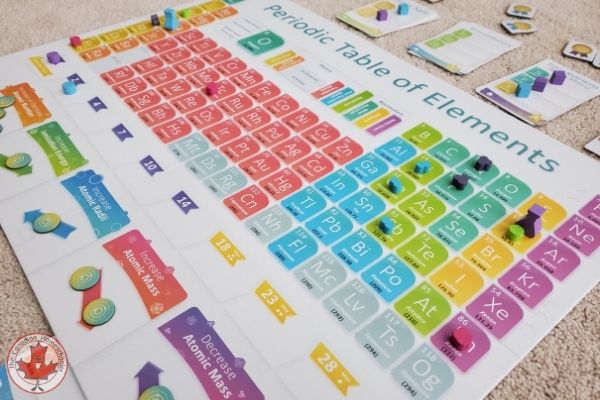
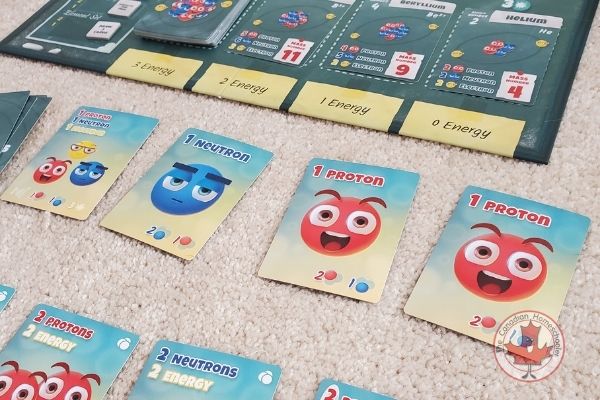
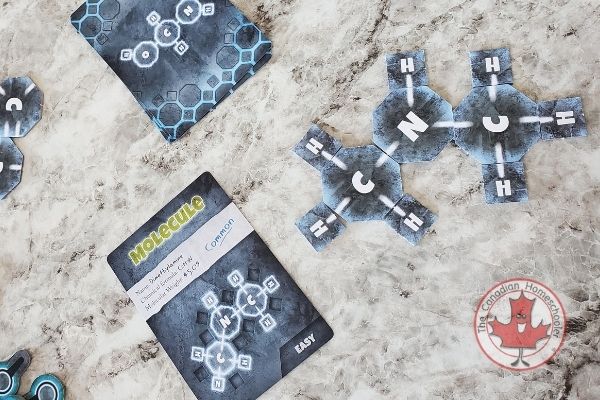
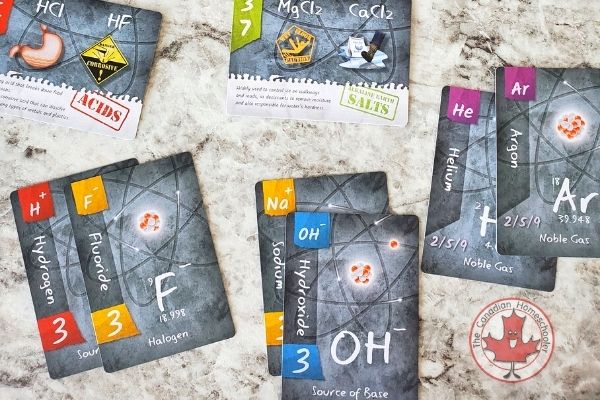
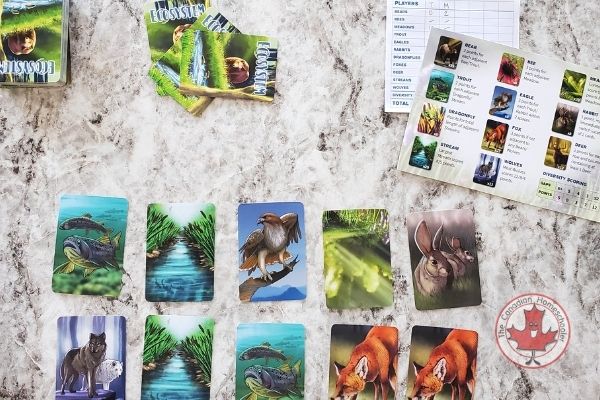
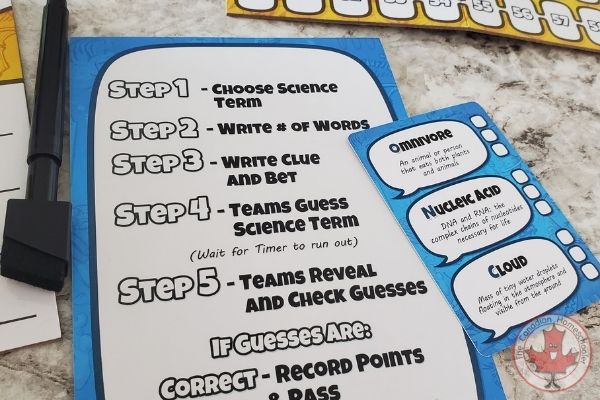


Excellent recommendations! I know a few of these will be *extremely* helpful for our family who loves games, science, and needs a different way to learn than just workbooks.
Thank you for hte in-depth reviews!
Thank you for sharing your impressions of these games. Earlier I saw mention of these games and more than once even. But when our child appeared, we began to think about how to develop him and instill in him a love for the exact sciences and not only. And we settled on a few toys from this manufacturer. There were some small doubts, but now I understand that they are still worth buying and giving to our baby. After your article, there is absolutely no doubt about it. It seems to me that such games will be interesting not only for children but also for their parents. So this is leisure time for the family.
All games are exciting and helpful. Thanks for sharing an excellent blog related to Home school programs.